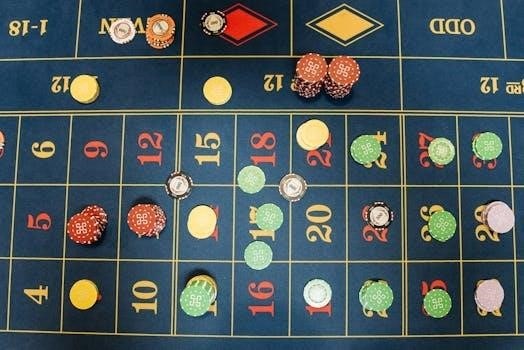Dr․ Tan’s Twelve Magical Points⁚ An Overview
Dr․ Tan’s system employs twelve acupuncture points, drawing from traditional Chinese medicine (TCM) and his innovative theories․ This approach utilizes the body’s meridians to address various ailments․ The system includes cardinal points, which are points specific for a condition or area, making it effective and efficient;
Dr․ Tan’s strategy of twelve magical points builds upon his earlier works, presenting a manual for acupuncture practitioners seeking to delve deeper into meridian therapy․ This method focuses on selecting specific points across the body’s twelve meridians․ The approach is rooted in the understanding of energy flow (Qi) and aims to restore balance within the body․ It integrates both classical acupuncture theory and Dr․ Tan’s unique insights․ The system is designed for treating a wide range of conditions, from chronic fatigue and fibromyalgia to insomnia and irritable bowel syndrome․ The approach guides practitioners in using twelve needles․ The goal of this strategy is to achieve therapeutic outcomes by strategically choosing points․ It is a method that is based on a deep understanding of the relationships between meridians and their functions․ This allows for a more targeted treatment, making it a powerful tool in acupuncture․
Core Principles of the Twelve Point System
The core of Dr․ Tan’s twelve-point system lies in the intricate relationships between the twelve main meridians of the body․ These meridians are the pathways through which Qi flows, and Dr․ Tan’s approach uses specific points on these channels to influence the body’s energy․ This system emphasizes the concept of balance, targeting points to regulate the flow of Qi․ It focuses on the body’s natural healing capabilities․ The selection of points is not arbitrary but is based on a deep understanding of meridians, their functions, and their interconnections․ The system prioritizes points that have specific effects on the body, particularly those that are considered cardinal points․ These cardinal points are chosen for their ability to directly address specific conditions or areas of the body, leading to more efficient and effective treatments․ The system aims to achieve a holistic balance, not just symptomatic relief․

The Twelve Meridians and Acupuncture Points
Traditional Chinese Medicine (TCM) recognizes twelve main meridians, pathways for Qi flow, with specific acupuncture points along them․ These points are stimulated to promote balance and healing within the body․
Meridian System in Traditional Chinese Medicine (TCM)
The meridian system in Traditional Chinese Medicine (TCM) is a fundamental concept, representing a network of pathways through which Qi, or vital energy, flows within the body․ There are twelve main meridians, each associated with a specific organ or function, forming an interconnected web․ Six meridians are considered Yin, and six are Yang, representing opposing yet complementary forces․ These meridians are not merely anatomical structures but energetic pathways that influence the physiological functions․ Within these meridians lie numerous acupuncture points that are stimulated to regulate the flow of Qi, thereby restoring balance and promoting healing․ The meridians bridge the gap between the tangible physical body and the intangible energetic system, according to TCM principles․ Understanding these pathways is crucial to effective acupuncture treatments․ Each meridian has its own course and specific functions․ Proper flow within these meridians is essential for health, and blockages can lead to ailments․
Location and Function of Acupuncture Points
Acupuncture points are specific locations along the meridians where Qi can be accessed and influenced․ These points are not randomly placed but are situated along the pathways of the twelve main meridians, along with the Ren and Du vessels․ Each point has unique functions and therapeutic effects, based on its location and meridian affiliation․ Points can be stimulated through needles, acupressure, or other methods to regulate the flow of Qi, blood, and fluids․ The precise location of these points is measured using “cun,” a body inch derived from the patient’s hand․ For example, the width of the thumb is one cun, while four fingers are three cun․ Points are often described in relation to bony landmarks or anatomical features․ Activating the proper point can alleviate pain, improve organ function, and restore the overall balance of the body․ These points act as gateways to the body’s energy system, therefore, making their precise location essential for effective treatment․

The 12 Magical Points in Detail
This section will delve into the specific twelve points, referencing Ma Danyang’s poem and the later addition of the twelfth point․ The details of each point will be discussed․
Ma Danyang’s Poem and the 11 Key Points
Ma Danyang, a renowned 12th-century Daoist monk, is central to understanding the origins of this system․ His famous ode highlights eleven key acupuncture points, which he identified as particularly potent for healing․ This poem serves as the foundation for Dr․ Tan’s approach․ Ma Danyang’s work focused on the essential nature of these specific points, detailing their location and their therapeutic applications․ The poem provides a historical and practical guide, emphasizing the unique qualities of each point in addressing various health conditions․ The selected points are considered to be among the most significant in the entire acupuncture system, making them a cornerstone of practice․ The legacy of Ma Danyang lives on through his insights into these powerful points․ The poem also gives a clear understanding of the location of each point and the traditional way to use them․ The descriptions from his writings are used by many practitioners today․
The Additional 12th Point
While Ma Danyang’s poem initially focused on eleven key acupuncture points, the system now includes a twelfth point․ This addition came about a century after Ma Danyang’s work, when another practitioner recognized the importance of this specific location․ The inclusion of this twelfth point expanded the therapeutic range of the system․ This additional point complements the original eleven, contributing to a more comprehensive approach to healing․ The specific location and function of the twelfth point enhance the overall effectiveness of the twelve-point strategy․ This point was integrated into the system to help with different conditions not covered by the first eleven․ It is a critical part of the approach, balancing the body, and offering greater treatment options․ This historical addition shows the ongoing evolution of acupuncture practice and its adaptability to better meet patient needs․

Clinical Applications and Benefits
The twelve magical points are used to treat conditions such as chronic fatigue, fibromyalgia, insomnia, and irritable bowel syndrome․ Case studies demonstrate the effectiveness of this acupuncture approach in alleviating symptoms and improving patients’ well-being․
Conditions Treated with the Twelve Points
Dr․ Tan’s twelve magical points are utilized to address a spectrum of health issues, drawing from the principles of Traditional Chinese Medicine (TCM)․ The conditions that are often targeted include chronic fatigue syndrome, where patients experience persistent exhaustion not relieved by rest․ Furthermore, fibromyalgia, characterized by widespread musculoskeletal pain accompanied by fatigue and sleep disturbances, is another area where these points are applied․ Insomnia, or difficulty in initiating or maintaining sleep, is also addressed through this system․ Irritable bowel syndrome (IBS), a gastrointestinal disorder causing abdominal pain, bloating, and altered bowel habits, also falls under the scope of this treatment․ The use of these specific points aims to restore balance within the body’s energy pathways, offering relief from these various ailments by addressing the root causes of these conditions and promoting overall well-being․
Case Studies and Results
Clinical applications of Dr․ Tan’s twelve magical points have shown promising results across a variety of conditions․ Case studies often highlight the effectiveness of this method in treating chronic fatigue syndrome, with patients reporting increased energy levels and reduced fatigue․ For fibromyalgia sufferers, there’s been noticeable improvement in pain management and a reduction in overall discomfort․ Insomnia cases show enhanced sleep quality and a decrease in the time it takes to fall asleep․ Patients with irritable bowel syndrome (IBS) have experienced a reduction in symptoms, such as abdominal pain, bloating, and altered bowel habits․ These case studies are often supported by patient testimonials, demonstrating the tangible benefits of these points․ Further research and large scale trials would help to build on the existing evidence and further confirm the effectiveness of this acupuncture approach․

Resources for Further Learning
For those seeking deeper knowledge, resources include PDF downloads detailing Dr․ Tan’s methods, online acupuncture databases, and advanced workshops focusing on the twelve magical points․
PDF Downloads and Online Resources
Numerous PDF documents are available for those wanting to delve deeper into Dr․ Tan’s Twelve Magical Points․ These resources often include detailed explanations of his theories, building upon his previous works such as “Twelve and Twelve in Acupuncture․” You can find these downloadable guides on various platforms, often alongside acupuncture points databases․ These databases are the result of accumulated clinical experience, offering a wealth of knowledge for both practitioners and individuals seeking to enhance their understanding of acupuncture․ They provide detailed descriptions of point locations, their functions, and traditional qualities․ Furthermore, many online resources offer charts containing cardinal points specific to conditions, functions, and areas of the body․ These charts provide valuable visual aids, mapping out the points and listing them by both condition and Chinese name․ Access to such resources allows for self-directed learning and serves as a valuable tool for any acupuncturist․
Workshops and Advanced Training
For those seeking a more immersive learning experience with Dr․ Tan’s Twelve Magical Points, attending workshops and advanced training sessions is highly recommended․ These workshops offer a more comprehensive understanding of the method, particularly the full 12 magical points or seasonal balance explanations․ Advanced track workshops, like the Si Yuan Balance Method, provide in-depth knowledge to fully grasp this amazing method․ These sessions often include hands-on practice, allowing participants to apply the theory directly․ Such training helps with clinical pearls, offering insights into the application of these points․ Workshops usually offer step-by-step guides and case study results, providing attendees with practical application knowledge․ They go beyond basic understanding, enhancing skills in using twelve needles across the twelve meridians, improving treatment for issues like chronic fatigue syndrome, fibromyalgia, insomnia, and irritable bowel syndrome․ This is a crucial step for those wanting to master the technique․


